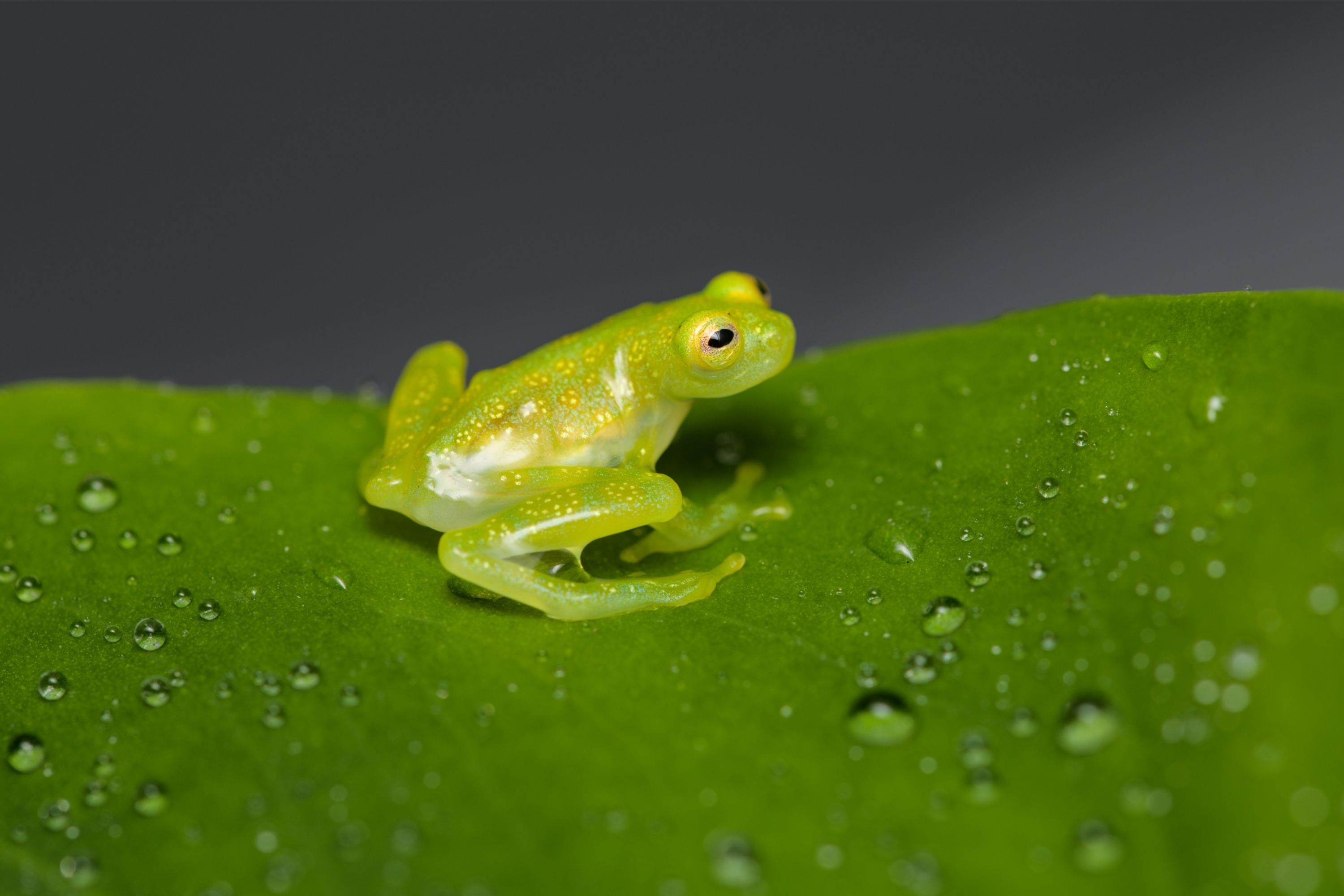Bare-hearted glass frog
(Hyalinobatrachium colymbiphyllum)

Description
Hyalinobatrachium colymbiphyllum,also called the bare-hearted glass frog, plantation glass frog and the cricket glass frog, is a species of frog in the family Centrolenidae that is found in moist forests, often near streams, in countries in Central America and South America.They are small, green frogs with many similarities to other glass frogs, however, they have the most transparent undersides of any glass frogs. Their transparent undersides make them ideal bio-indicators for how global warming and other threats are affecting the animals in the forests. Bare-hearted glass frogs are similar in features to most glass frogs but have their own distinct characteristics. Like most glass frogs, they are small and green with yellow spots and transparent undersides. The transparent undersides are the main feature of most glass frogs, but the bare-hearted glass frog has the clearest underside, allowing almost full visibility of their internal organs.Their transparent skin also makes them difficult to see, as well as their size. They are very small, with male frogs being 22–27 mm (0.87–1.06 in) long and females 24.5–29 mm (0.96–1.14 in) long. Other distinct characteristics of bare-hearted glass frogs are their forward-facing golden eyes and nostrils raised from their heads. They spend time moving throughout the forests and streams, their front fingers being less webbed and more isolated, while their back feet are heavily webbed, allow them mobility in trees and in water. Bare-hearted glass frog tadpoles are very small, less than 9.5 mm (0.37 in). They are brown with light undersides and have long bodies with pointed tails for swimming while they mature in the streams. Since they rely on the presence of trees, they are most threatened by the destruction of their habitat from deforestation. Even though they face threats to their environment, according to the International Union for Conservation of Nature, they are considered to be "least concern" for extinction.However, with many other glass frogs declining in population, bare-hearted glass frogs are also at risk.lobal warming is also a threat to bare-hearted glass frogs. They need moisture and rain in order to not dry out, and lack of rain or warmer conditions can be dangerous. Biologists are interested in further researching and observing bare-hearted glass frogs as they can be good bio-indicators of how global warming is affecting, not only frogs, but other species in rainforests
Taxonomic tree:







